MEMORABLE MOMENTS: KELSO WINS THE INTERNATIONAL
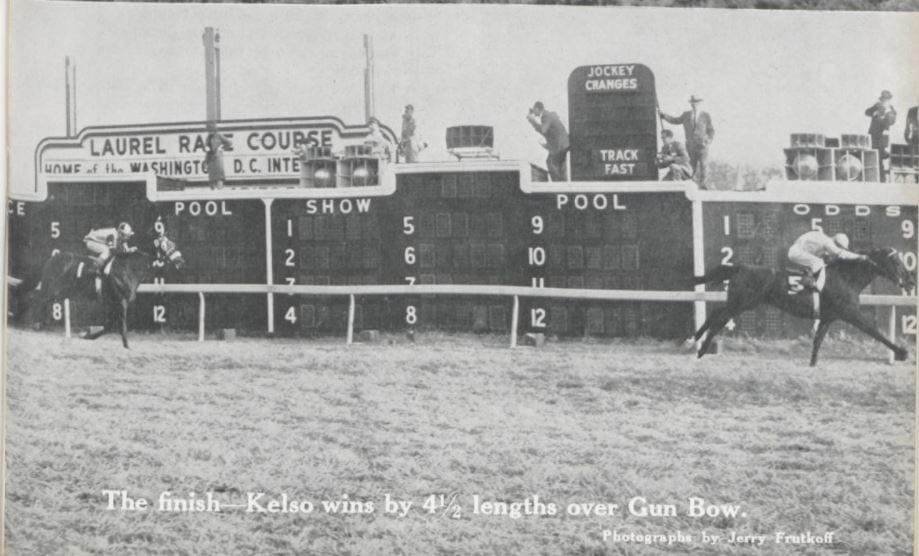
By the time Kelso was ready to do battle in the 1964 Washington D.C. International on November 11, 1964 at Laurel Race Course, he had already established himself as one of history’s thoroughbred heroes.
Beginning in 1960, Kelso had been named Horse of the Year four times, capturing the sport’s most important events at tracks up and down the East Coast. He’d also become the world’s leading money-winning horse – he would finish his career with nearly $2 million in earnings — and endeared himself to countless fans nationwide.
The great turf writer Joe Hirsch wrote, “Once upon a time there was a horse named Kelso. But only once.”
Yet the Washington D.C. International, the forerunner of today’s Breeders’ Cup Turf, was the one race that had eluded the gelding, a modestly bred son of Your Host.
Though more than five decades have passed since 7-year-old Kelso paraded to the post that day with jockey Ismael Valenzuela, ready to face his archrival Gun Bow, it is still one of the most memorable races ever to be contested at Laurel, and of Kelso’s storied career, as well.
Many thought Kelso was a much better horse on dirt than on turf, and that he might never win the 1-1/2 mile International. Three years in a row, in 1961, 1962 and 1963, Kelso had tried to win the prestigious test, but finished second each time, all by narrow margins. And thus, it became the race that his owner and breeder, Mrs. Richard C. du Pont, wanted to win more than any other.
Our new Memorable Moments series captures some of the greatest races in Midlantic racing history.
While many great horses were often heralded for their beauty, Kelso was a plain-looking, often cantankerous gelding who earned accolades for the way he ran, almost like poetry in motion. He was described as “exceptionally wide across the hips; up front he had long, smooth muscles of a stayer, and, all in all, a hard, deer-like aspect,” wrote turf writer William H. P. Robertson.
Another turf writer, Sports Illustrated’s Whitney Tower, commented: “He is neither ugly nor particularly pretty. He is a combination dark bay and brown and, like the Italian champion, Ribot, does not look impressive until he begins moving. Then the beautiful rhythm and smooth action immediately stamp him an individual with unique class.”
The Laurel oddsmaker, in a nod to the superiority of the American duo over the International field, tabbed Kelso, who drew post five, as the morning line favorite at 7-5, with Gun Bow, who drew the rail, second-choice at 8-5. Competing against them in the 13th running of the International, which carried a purse of $150,000, were six runners from across the globe: the French filly Belle Sicambre; Anilin from the Soviet Union; the Venezuelan Primordial II; Biscayne II from Ireland; the Italian colt Veronese II, and Ryu Forel from Japan.
As post time of 3:45 p.m. drew near, the light began to fade on that warm Wednesday afternoon. A crowd of 37,800 jammed the suburban Maryland course to see the mighty Kelso; they stood shoulder-to-shoulder on the track apron and ringed the outside fence around the oval, jostling for the best view of the dark brown gelding.
In the end, they were not disappointed in the result – although they had to wait for it.
“That was an exciting day,” recalled King T. Leatherbury, stabled then as now at Laurel. “I remember we got tremendous publicity for the race, and the place was packed. There were cars as far as you could see out on Route 1 and on Route 198. There was a lot of strange people all dressed up and walking around – I got a kick out of it. And of course, there was Kelso.”
When the tape was lifted (the field did not break from a starting gate), it was Gun Bow and jockey Walter Blum who scampered out to the early lead. Blum let Gun Bow establish a four-length lead as they passed the stands for the first time, with Kelso in closest pursuit and Belle Sicambre third. Down the backstretch, Kelso crept closer to his rival – three lengths, two lengths, one length – then on the far turn, the pair raced briefly as a team.
A deafening roar went up from the crowd. Gun Bow bravely tried to hold the lead at the top of the stretch, but Kelso was moving so fast that it appeared he had been shot out of a cannon. He stormed past Gun Bow while on the outside, then crossed over to the rail while seemingly clear at the furlong marker.
With Valenzuela urging Kelso on with several right-handed taps of the whip, he steadily increased his advantage down the stretch, ears pinned, with the gray-and-yellow Bohemia Stable silks nearly glowing in the shadows. Photographers atop the infield tote board aimed their cameras as he crossed the wire 4-½ lengths in front of Gun Bow, with the Soviet runner Anilin nine lengths further back in third.
- Sparkle Blue, Cut From Class meet again in Dahlia
 Millionaire Sparkle Blue and speedy Cut From Class, who slugged it out in last year’s Big Drefyus, meet again Saturday in the Dahlia at Laurel Park.
Millionaire Sparkle Blue and speedy Cut From Class, who slugged it out in last year’s Big Drefyus, meet again Saturday in the Dahlia at Laurel Park.
The final time for the race over drought-hard turf was 2:23 ⅘, which was a new course and American record.
As the crowd cheered when Kelso came back towards the winner’s enclosure, their joy quickly turned to anger by an announcement: “Ladies and gentlemen, please hold all tickets. There has been an objection.”
Blum had lodged a claim of foul, alleging that Kelso impeded Gun Bow when he made his move to the rail.
Steve Cady, writing for The New York Times, described the immediate aftermath as “grim, tension-filled minutes.”
Kelso’s trainer Carl Hanford was more direct: “I didn’t see nothing.”
Mrs. du Pont, dressed in a gray suit, did not smile for the cameras, and her 24-year-old daughter Lana was in tears.
“Then the number on the board was official, and the group cut loose with a variety of shouts that all translated roughly into ‘yahoos,’” wrote Cady. “She (Mrs. du Pont) cried all the way to the nearby white wooden platform, where the presentation ceremony would take place, and when the band struck up ‘The Star-Spangled Banner,’ the tears started coming in buckets. Nobody minded.”
Kelso’s 1964 season concluded after the International, and he earned his fifth and final Horse of the Year title. He returned to win three times in 1965, then raced once in 1966 – when he was nine — but was injured and retired to du Pont’s Woodstock Farm in Maryland.
With his International victory, however, Kelso proved his critics wrong, showing that he was indeed every bit as much a champion on turf as on dirt. He left the stage as one of the most popular campaigners ever. The gelding died in October, 1983, at the age of 26.
SOURCES
- “Tears and Cheers Go Out to Victor,” The New York Times, November 12, 1964, page 45.
- “Kelso and Gun Bow of U. S. Expected to Run 1, 2 in International,” The New York Times, November 10, 1964, page 62.
- “Kelso Gets No. 5 Post in International Today,” The New York Times, November 11, 1964, page 53.
- “The Best Race Horse in the World,” Whitney Tower, Sports Illustrated, October 9, 1961.
- Robertson, William H P. The History of Thoroughbred Racing in America. New York, Bonanza Books, 1964, p. 550.
LATEST NEWS


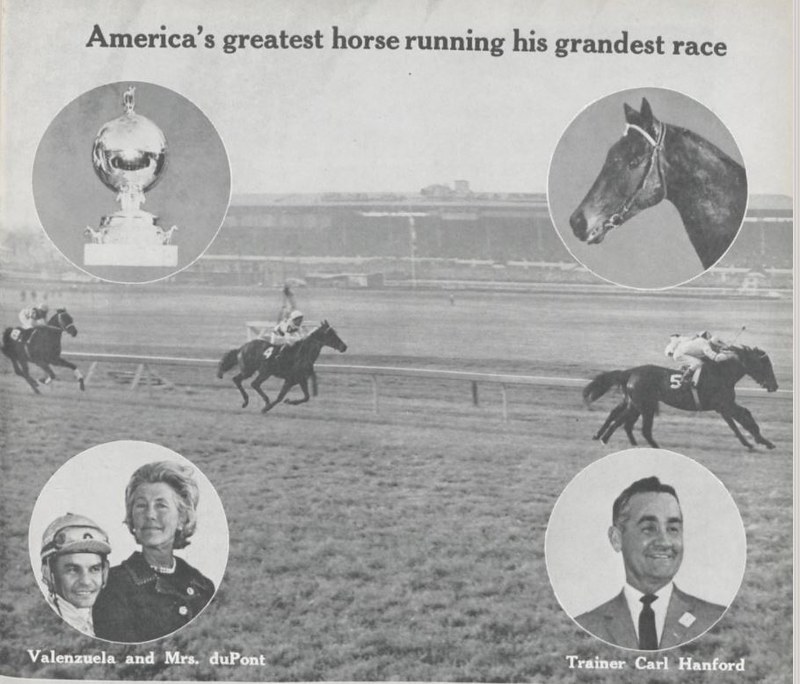
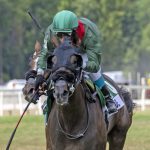
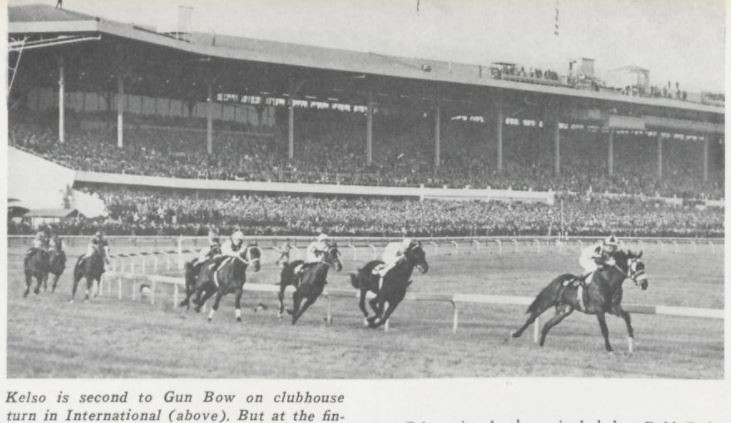
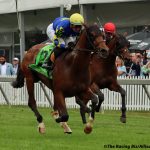
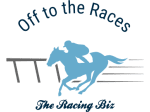
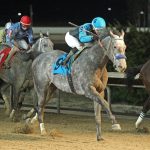
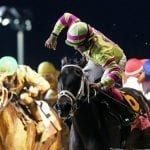
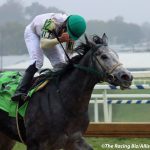






You never see this written anymore but the drought was so bad that they had to dye the dirt green. I always personally credit Kelso with the World Record on dirt not Secretariat. Also Kelso had to do it on 3 turns not 2.